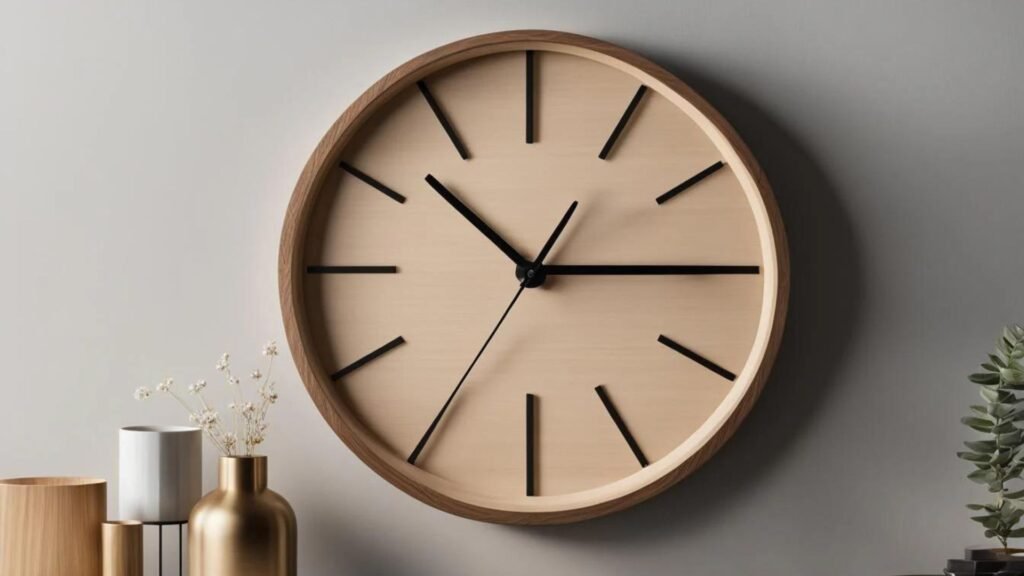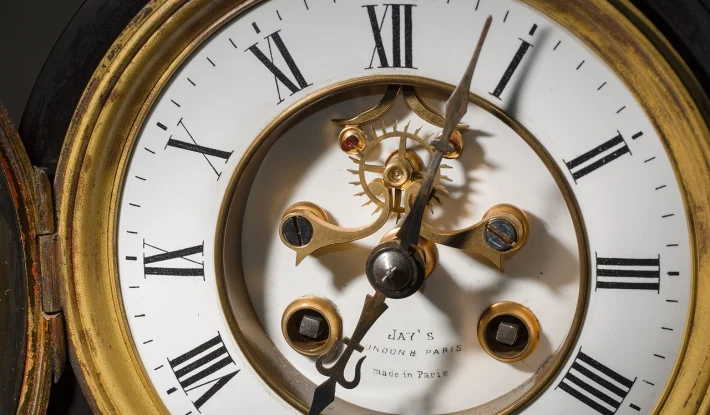Japanese clocks are renowned for their unique blend of artistry, craftsmanship, and innovation. From traditional designs steeped in history to modern interpretations driven by cutting-edge technology, Japanese clocks offer a fascinating look at the evolution of timekeeping. Let’s explore the key differences between traditional Japanese clocks and their modern counterparts.

Traditional Japanese Clocks
Historical Background
Traditional Japanese clocks have a rich history that dates back to the Edo period (1603-1868). During this era, timekeeping was deeply influenced by both Chinese and Japanese culture.
- Kōsō-ō (Japanese Water Clock): Used in ancient Japan, these clocks measured time using the flow of water. They were often used in temples and gardens and are admired for their intricate mechanical design.
- Wadokei (Japanese Mechanical Clocks): Introduced in the early 17th century, these clocks adapted European designs to fit Japanese needs. They typically featured a unique system of hour divisions that differed from Western clocks, reflecting Japan’s traditional timekeeping methods.
Craftsmanship and Materials
Traditional Japanese clocks are celebrated for their exceptional craftsmanship and use of high-quality materials.
- Materials: Often made from fine woods like cherry or walnut, traditional clocks showcase elaborate woodwork and lacquer finishes.
- Design: The designs are often influenced by Japanese aesthetics, featuring minimalistic and elegant forms. Many traditional clocks include intricate carvings and decorative elements that reflect traditional Japanese motifs.
Functionality and Design
Traditional Japanese clocks often emphasize beauty and tradition over precision.
- Mechanics: Many traditional clocks use mechanical movements, which require winding and maintenance. The focus is on craftsmanship rather than precision timekeeping.
- Aesthetics: The designs are often influenced by Japanese art and culture, featuring elements such as floral patterns, landscapes, and traditional symbols.
Modern Japanese Clocks
Technological Advancements
Modern Japanese clocks integrate the latest technology, offering enhanced functionality and precision.
- Digital Displays: Modern clocks often feature digital displays, including LED and LCD screens, which provide clear and accurate timekeeping.
- Smart Features: Many modern clocks come with smart features such as Bluetooth connectivity, alarms, and synchronization with other devices.
Design Innovations
Modern Japanese clocks showcase innovative designs that blend functionality with contemporary aesthetics.
- Materials: Modern clocks use a variety of materials, including metals, plastics, and advanced composites, offering durability and a sleek appearance.
- Design: The designs are often minimalist and futuristic, reflecting modern Japanese aesthetics. They may incorporate clean lines, geometric shapes, and a focus on simplicity.
Functionality and Features
Modern clocks emphasize precision and versatility, offering a range of features that cater to contemporary needs.
- Accuracy: Modern clocks are known for their precise timekeeping, often using quartz movements or atomic timekeeping technology.
- Additional Features: Many modern clocks include features such as built-in radios, weather displays, and timers, enhancing their functionality beyond basic timekeeping.
Comparing Traditional and Modern Japanese Clocks
| Aspect | Traditional Japanese Clocks | Modern Japanese Clocks |
|---|---|---|
| Historical Context | Rooted in Edo period and ancient designs | Reflect contemporary technological advancements |
| Craftsmanship | Emphasizes traditional craftsmanship and materials | Focuses on modern materials and manufacturing techniques |
| Functionality | Mechanical with artistic focus, less emphasis on precision | Highly accurate with additional smart features |
| Design | Elegant, minimalistic with traditional motifs | Sleek, futuristic with clean lines and innovative shapes |
Timeless Appeal of Japanese Clock Logos
Japanese clock logos are admired for their precision, elegance, and cultural significance. From vintage designs to modern interpretations, they reflect a rich heritage of craftsmanship. For those who appreciate detail and quality in all aspects of life, including entertainment, explore top-rated american online casinos.
Conclusion
Traditional Japanese clocks offer a glimpse into the rich cultural heritage and craftsmanship of Japan’s past. Their intricate designs and historical significance make them cherished collectibles and symbols of artistry. In contrast, modern Japanese clocks embrace technological advancements and contemporary design, providing precision and functionality for today’s fast-paced world. Both traditional and modern Japanese clocks highlight Japan’s ability to blend historical reverence with innovation, creating timepieces that are both beautiful and functional.


